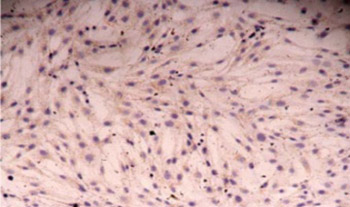Effects of Urotensin II and Its Specific Receptor Antagonist Urantide on Rat Vascular Smooth Muscle Cells
DOI:
https://doi.org/10.17305/bjbms.2013.2369Keywords:
atherosclerosis, urantide, urotensin II, vascular smooth muscle cell (VSMC)Abstract
We investigated the effects of urantide, a receptor antagonist of urotensin II (U-II), on the expression of U-II and its receptor GPR14 in rat vascular smooth muscle cells. Vascular smooth muscle cells from rat thoracic aorta were cultured by explant method. Subjects in this experiment were divided into eight groups: normal control group (group C), U-II group (group M), positive control group (Flu group) and urantide-treated groups (10-10, 10-9, 10-8, 10-7 and 10-6 mol/L). Cultured vascular smooth muscle cells in vitro were studied by immunocytochemistry, biochemistry, and flow cytometry. U-II (10-8 mol/L) promoted the proliferation of vascular smooth muscle cells at each time point, influenced cell cycle, increased proliferation index and S-phase cell fraction, and dramatically promoted the expression of U-II and GPR14. In the concentration range from 10-10 to 10-6 mol/L, urantide dramatically inhibited the proliferation of vascular smooth muscle cells and the protein expression of U-II and GPR14, especially at a concentration of 10-6 mol/L. U-II, binding with its receptor GPR14, promotes vascular smooth muscle cells proliferation and migration, which can be inhibited by urantide. This study provides an evidence for understanding the effects of U-II and its receptor GPR14 on vascular smooth muscle cells.
Citations
Downloads

Downloads
Additional Files
Published
How to Cite
Accepted 2017-08-16
Published 2013-05-20









